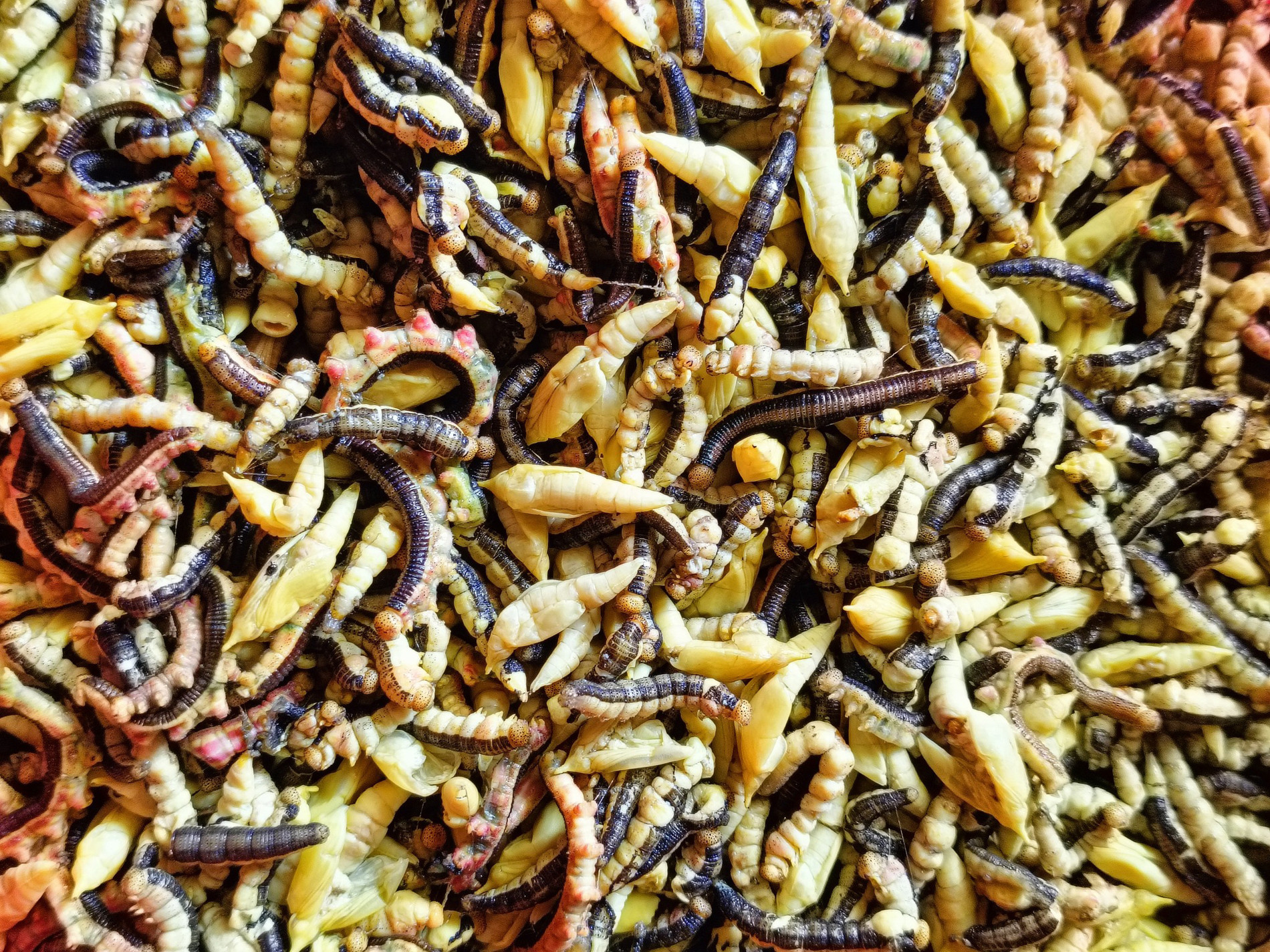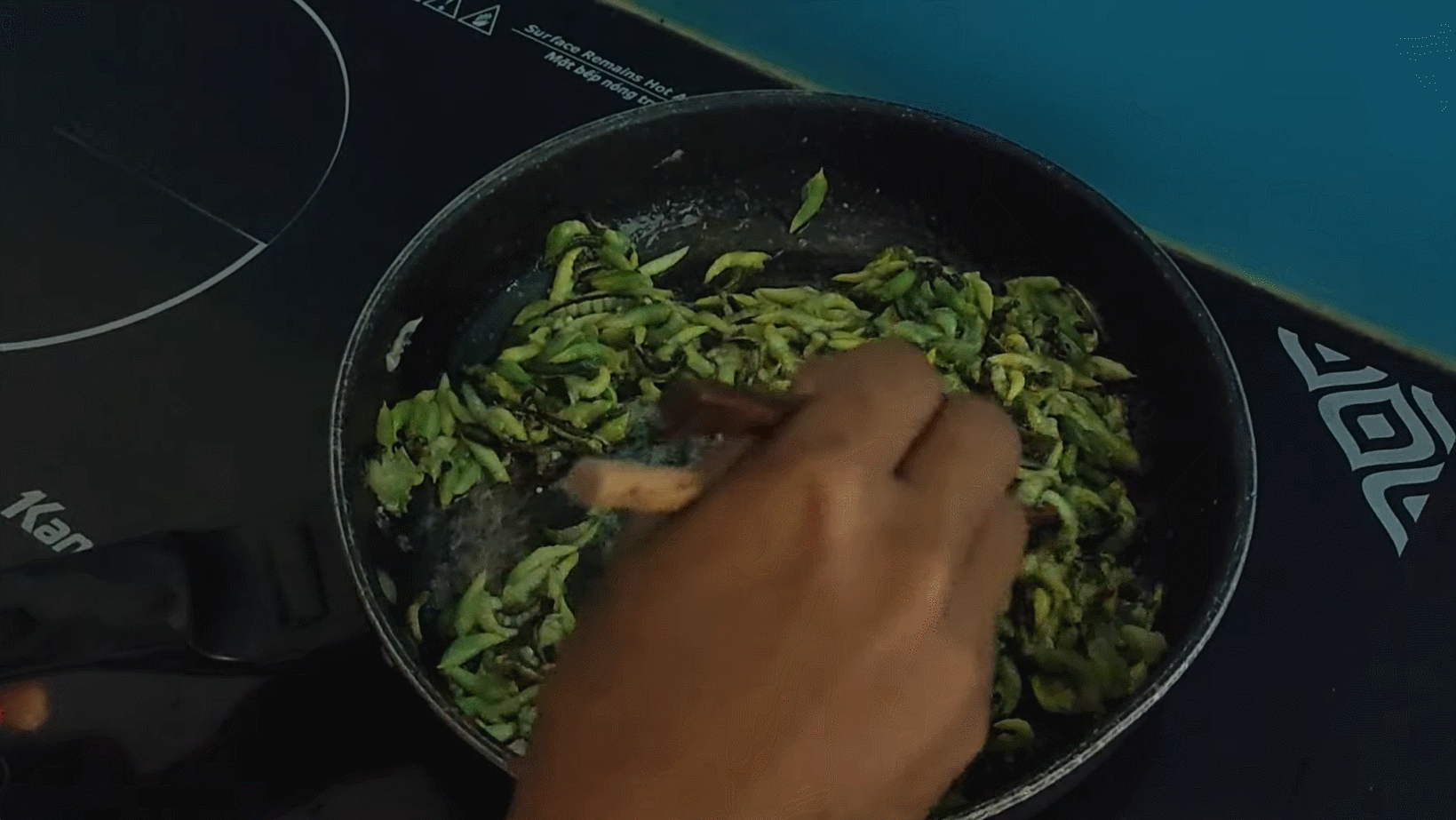Despite its off-putting appearance that might make many diners squeamish at first glance, the larvae and pupae of the cassia tree (known locally as sâu và nhộng muồng) are considered a prized specialty in Vietnam’s Central Highlands, appreciated for their rich, nutty flavor and crisp texture.
 |
 |
In this region, cassia larvae and pupae are a beloved rustic delicacy, especially among the local ethnic communities. They are found clinging to the leaves of cassia trees, commonly planted along plot boundaries, field edges, and in coffee gardens.
From early March through the end of April is peak season for cassia worms and pupae. Locals simply part the cassia leaves to find them clustered thickly on the branches, collecting them quickly to sell or cook at home.
“Once fully developed, the larvae leave the tree tops and crawl down the leaves to form cocoons. These eventually become butterflies and fly away,” said Y Sue Knul, a resident of Buon Ma Thuot, Dak Lak. “So when the season starts, we must harvest them fast. A single rainfall can wipe them out.”
According to Knul, preparing these ingredients is fairly straightforward. Once collected, the larvae are kept alive for 4-6 hours to allow them to naturally purge their digestive tracts. They are then thoroughly rinsed, blanched in boiling water, and either seasoned or cooked according to taste.
Cassia worms and pupae can be boiled and served with salt and pepper, grilled, stir-fried, but most locals agree they are best when pan-fried in fat.
Once cleaned, the larvae and pupae are tossed into a hot pan with lard, sautéed with minced garlic and onions, and seasoned to taste. When nearly done, finely chopped lime leaves are added for fragrance.
The finished dish has a golden, crispy exterior and a delicious aroma. The texture is crunchy on the outside and creamy inside, somewhat like silkworm pupae but more aromatic and less greasy.
According to Knul, these delicacies fetch a high price at the beginning and end of the season, around VND 200,000 - 250,000 per kilogram (USD 8 - 10). When transported to southern provinces or farther, prices can rise to VND 350,000 - 400,000 per kilogram (USD 14 - 16) - on par with premium seafood - but they remain popular among food enthusiasts.
“Cassia worms and pupae are a delicacy to many locals and visitors, but not everyone can eat them. Those prone to allergies should be cautious and consider their health before tasting,” he advised.
Mai Huong, a resident of Ho Chi Minh City, had the chance to try this specialty during a business trip to Dak Lak. She admitted that the dish looked intimidating at first but turned out to be surprisingly tasty.
“Personally, I prefer the pupae over the larvae - the outer layer is crisp, and the inside is rich and creamy. Once I tried it and loved it, I started ordering some to take home to HCMC. Since they’re seasonal, I ask friends to get a few kilos during peak season so I can clean, freeze, and store them. They make a great dish when I want something different or have guests over,” she shared.


 |
 |
 |